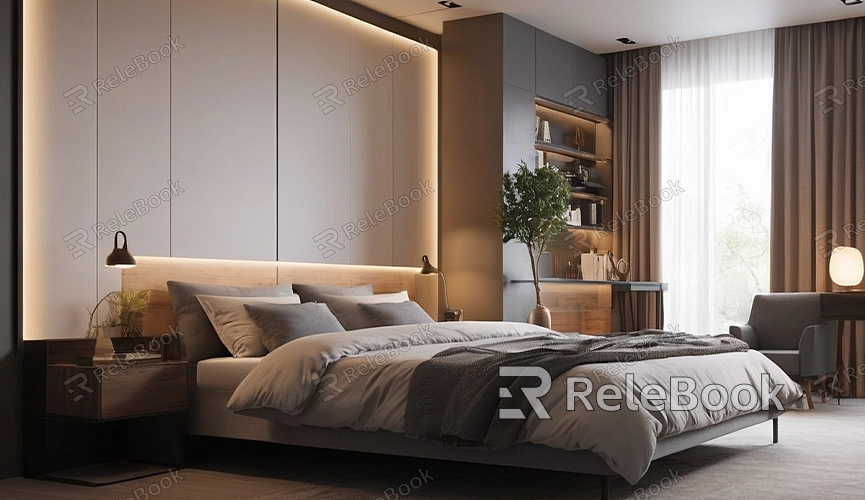How to Render Image in Blender Cycles
Blender stands as one of the most popular 3D modeling and rendering software, with Cycles being one of its high-quality ray-tracing rendering engines. This article will delve into the process of rendering images in Blender Cycles, from basic setups to final outputs, aiding you in mastering the techniques of rendering images in Blender Cycles.
Installing and Setting Up Blender
1. Download and Install Blender: Firstly, ensure you've downloaded and installed the latest version of Blender from the Blender website ([blender.org](https://www.blender.org)).
2. Open Blender: After installation, open Blender, where you'll encounter a default scene comprising a cube, a light, and a camera.
Setting Up the Cycles Rendering Engine
1. Switch to the Cycles Rendering Engine: At the top of the Blender interface, locate the "Render Engine" dropdown menu and change the default "Eevee" to "Cycles."
2. Select Rendering Device: If your computer has a powerful GPU, choose "CUDA" or "OptiX" in the "Performance" tab to utilize GPU rendering, significantly speeding up the rendering process.
Preparing the Scene
1. Add and Edit Objects: Add models to the scene as needed. For example, you can use the Shift+A shortcut to add new objects like cubes, spheres, or other geometric shapes. Use Blender's editing tools to adjust the shapes and positions of these objects.

2. Add Materials: Add materials to the objects in the scene. In the right-side properties panel, select the "Materials" tab, then click the "New" button to create a new material for the object. You can adjust the material properties in the "Shader Editor."
3. Set Up Lighting: Lighting plays a crucial role in rendering effects. You can add multiple light sources to the scene, such as point lights, spotlights, or area lights. Adjust the position and intensity of the light sources to achieve the best results.
Camera Settings
1. Adjust Camera Position: Switch to the camera view by pressing the Numpad 0 key in the 3D viewport. Use the G (move), R (rotate), and S (scale) keys to adjust the camera's position and angle to capture the desired scene.
2. Set Camera Properties: In the right-side properties panel, select the "Camera" tab to adjust the camera's focal length, depth of field, and other properties to achieve the desired visual effects.
Rendering Settings
1. Set Rendering Resolution: In the right-side properties panel, select the "Output Properties" tab and set the rendering resolution. The default is 1920x1080, but you can adjust it as needed.
2. Choose Output Format: In the "Output Properties" tab, select the rendering output format. Common formats include PNG and JPEG. If you need a transparent background, choose the PNG format and check "Alpha" in the "File Format" section.
3. Set Sampling Rate: In the "Render" tab, set the sampling rate for Cycles. A higher sampling rate results in better image quality but also increases rendering time. In general, you can set the sampling rate to 128 or 256.
Starting the Rendering Process
1. Render a Single Frame: Press the F12 key or choose "Render" -> "Render Image" from the top menu. Blender will start rendering the current frame and display the result in the rendering window.
2. Save the Rendered Image: After rendering is complete, press the F3 key in the rendering window or choose "Image" -> "Save" to select a save path and file format and save the rendered image locally.
Optimizing Rendering Effects
1. Use Denoising: In the "Render" tab, enable the "Denoising" option to significantly reduce rendering noise and improve image quality.
2. Adjust Light Paths: In the "Light Paths" tab, you can adjust the maximum number of light bounces for reflections and refractions to balance image quality and rendering time.
3. Enable Adaptive Sampling: In the "Sampling" tab, enable the "Adaptive Sampling" option to allow Blender to intelligently allocate more samples to complex areas, thereby improving rendering efficiency.
Rendering images in Blender Cycles requires steps such as setting up the rendering engine, preparing the scene, adjusting the camera, and setting rendering parameters. With proper setup and optimization, you can improve rendering efficiency while maintaining image quality. If you need many high-quality 3D textures and HDRI or 3D model downloads while creating models and virtual scenes, you can download them from Relebook.

